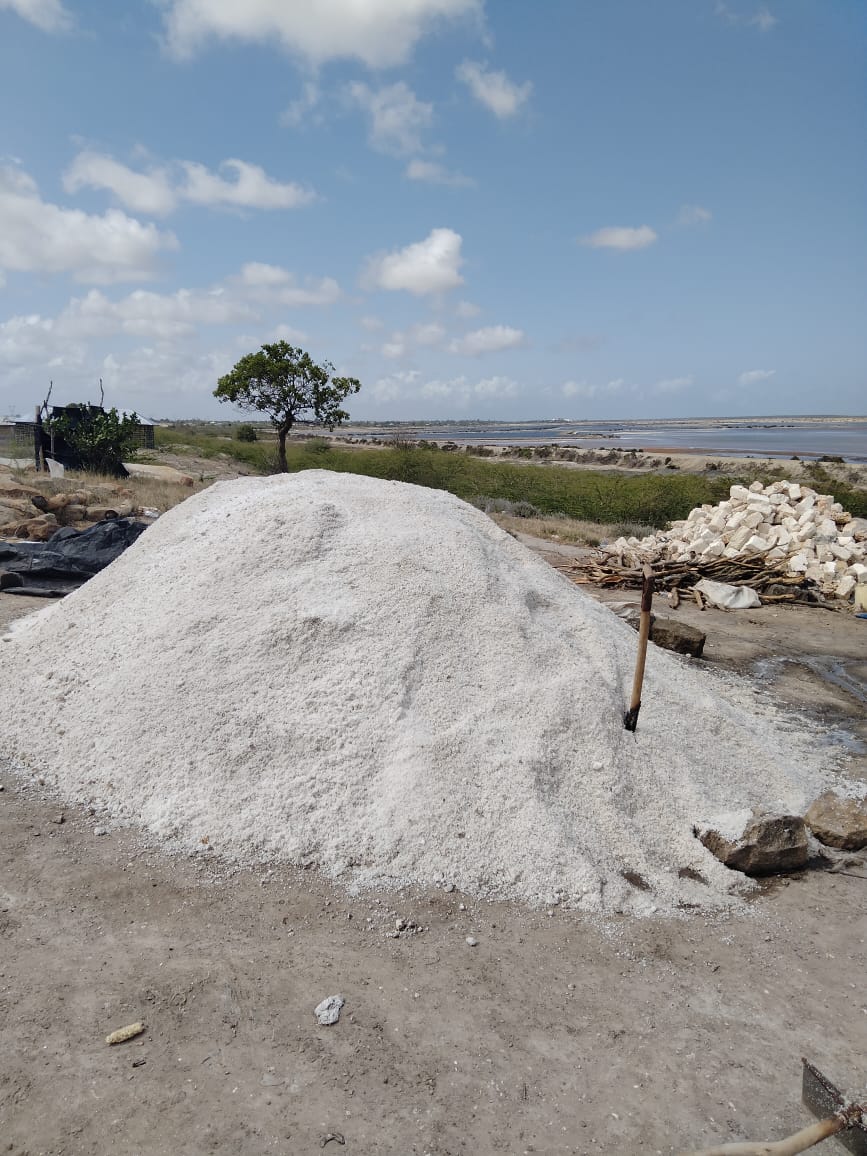
At the salt evaporation ponds in Gongoni, Kilifi County. Water (mostly seawater) is directed into the ponds by the use of pumps. Natural evaporation is then left to take place and salt is subsequently harvested. The ponds also provide resting grounds for waterbirds. #BlueEconomy 







The salt production sector has large-scale players who have monopolized the table salt market and special salt suitable for baking. The small-scale players like the one whose ponds I've pictured focus on other markets like animal feed makers.
There is ongoing competition, sometimes unfair, despite the focus on different markets. The larger companies are often accused of blocking seawater from reaching the ponds of the small-scale entrepreneurs in the sector.
The small-scale economics: A 50kg bag fetches Ksh. 500, most of their markets (animal feed makers) are in Nairobi. Production per bag is anything between Ksh. 45 - Ksh. 70 depending on factors like fuel cost, weather & water availability. The ponds employ both genders. 

I see a young man running across with a load of salt on his shoulder. He had just stolen salt from a heap belonging to one of the larger salt companies. I am told it is a common occurence, the younger generations bitter with the companies because they sit on land that was theirs.
This bring to light a deeper socio-economic issue in Gongoni & other salt production areas. The big companies did acquire the land many years ago but the feeling is it was by arm-twisting and at a throw away price. Also, the community don't feel they gain from the companies' CSR.
• • •
Missing some Tweet in this thread? You can try to
force a refresh






